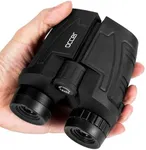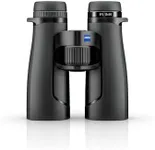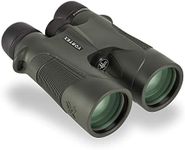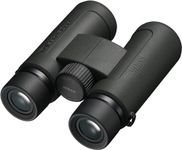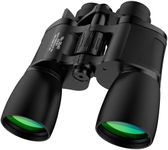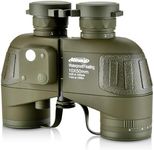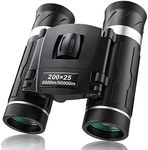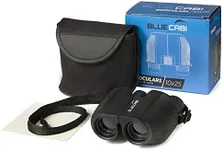Buying Guide for the Best Affordable Binoculars
Choosing the right binoculars can greatly enhance your outdoor experiences, whether you're bird watching, hiking, or attending a sports event. When selecting affordable binoculars, it's important to consider several key specifications to ensure you get the best value for your money. Understanding these specs will help you make an informed decision based on your specific needs and preferences.MagnificationMagnification indicates how much closer an object will appear compared to the naked eye. For example, 8x magnification means the object will appear eight times closer. Higher magnification can provide more detail but may also result in a shakier image and a narrower field of view. For general use, 8x to 10x magnification is usually sufficient. If you need binoculars for bird watching or sports events, 8x is a good balance between detail and stability. For stargazing or long-distance viewing, you might prefer 10x or higher.
Objective Lens DiameterThe objective lens diameter, measured in millimeters, determines how much light the binoculars can gather. Larger diameters allow more light, resulting in brighter images, especially in low-light conditions. However, larger lenses also make the binoculars bulkier and heavier. For general outdoor use, a diameter of 25mm to 42mm is typically adequate. If you plan to use the binoculars in low-light conditions, such as dawn or dusk, consider lenses on the higher end of this range.
Field of ViewField of view (FOV) is the width of the area visible through the binoculars at a specific distance, usually measured in feet at 1,000 yards. A wider FOV makes it easier to locate and track moving objects, which is particularly useful for bird watching and sports. Binoculars with a FOV of 300 feet or more at 1,000 yards are generally considered good for these activities. If you need binoculars for stargazing or viewing stationary objects, a narrower FOV may be acceptable.
Weight and SizeThe weight and size of binoculars can affect comfort and portability. Heavier binoculars can be tiring to hold for extended periods, while more compact models are easier to carry around. If you plan to use the binoculars for long hikes or travel, look for lightweight and compact options. For stationary use or short outings, weight may be less of a concern.
Lens CoatingLens coating improves light transmission and reduces glare, resulting in clearer and brighter images. There are different types of coatings: coated (a single layer on at least one lens surface), fully coated (a single layer on all air-to-glass surfaces), multi-coated (multiple layers on at least one lens surface), and fully multi-coated (multiple layers on all air-to-glass surfaces). Fully multi-coated lenses provide the best image quality but may be more expensive. For affordable binoculars, fully coated or multi-coated lenses offer a good balance of performance and cost.
Prism TypeBinoculars use prisms to correct the orientation of the image. There are two main types: Porro prisms and roof prisms. Porro prism binoculars are generally bulkier but offer better depth perception and a wider field of view at a lower cost. Roof prism binoculars are more compact and durable but can be more expensive. For affordable binoculars, Porro prisms are often a good choice unless you need the compactness of roof prisms.
Eye ReliefEye relief is the distance from the eyepiece to your eye where you can see the full field of view. This is especially important for eyeglass wearers. Longer eye relief (15mm or more) allows you to use binoculars comfortably with glasses. If you don't wear glasses, eye relief is less critical, but it's still a factor in overall comfort.

